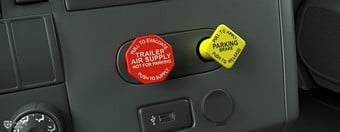There ought to be a lot of work for semi-truck drivers in the great state of Louisiana! Louisiana’s abundance of oil and gas and its refineries and chemical plants have made the state a major hub for the oil and gas industry. Another key economic sector is agriculture, producing seafood, cotton, soybeans, sugarcane, and other products. Both of these economic sectors need truck drivers to transport equipment and materials to them and transport their products. There are also economic opportunities in logistics. The Port of South Louisiana is one of the largest tonnage ports in the Western Hemisphere, creating a demand for truck drivers skilled in intermodal transport.
In Louisiana, major trucking routes include Interstate 10, Interstate 12, Interstate 20, Interstate 49, U.S. Route 90, U.S. Route 61, U.S. Route 90, and Louisiana Highway 1.
To drive commercial motor vehicles (CMVs), you must obtain a Commercial Driver’s License (CDL). The requirements for a CDL include passing a medical exam, passing a knowledge test on the general theory of commercial driving, and passing a skills test on operating a CMV. There are three classes of CDL: Class A, Class B, and Class C. To be allowed to drive heavy combination vehicles such as semi-trucks and tractor-trailers, you must obtain a Class A Commercial Driver’s License (CDL). A Class A CDL allows you to operate combination vehicles with a gross combination weight rating (GCWR) of 26,001 pounds or more, provided the towed vehicle(s) has a gross vehicle weight rating (GVWR) of more than 10,000 pounds. To qualify, you must pass the official Combination Vehicles knowledge test on the theory of operating combination vehicles in addition to all the general CDL requirements.















